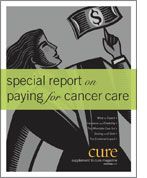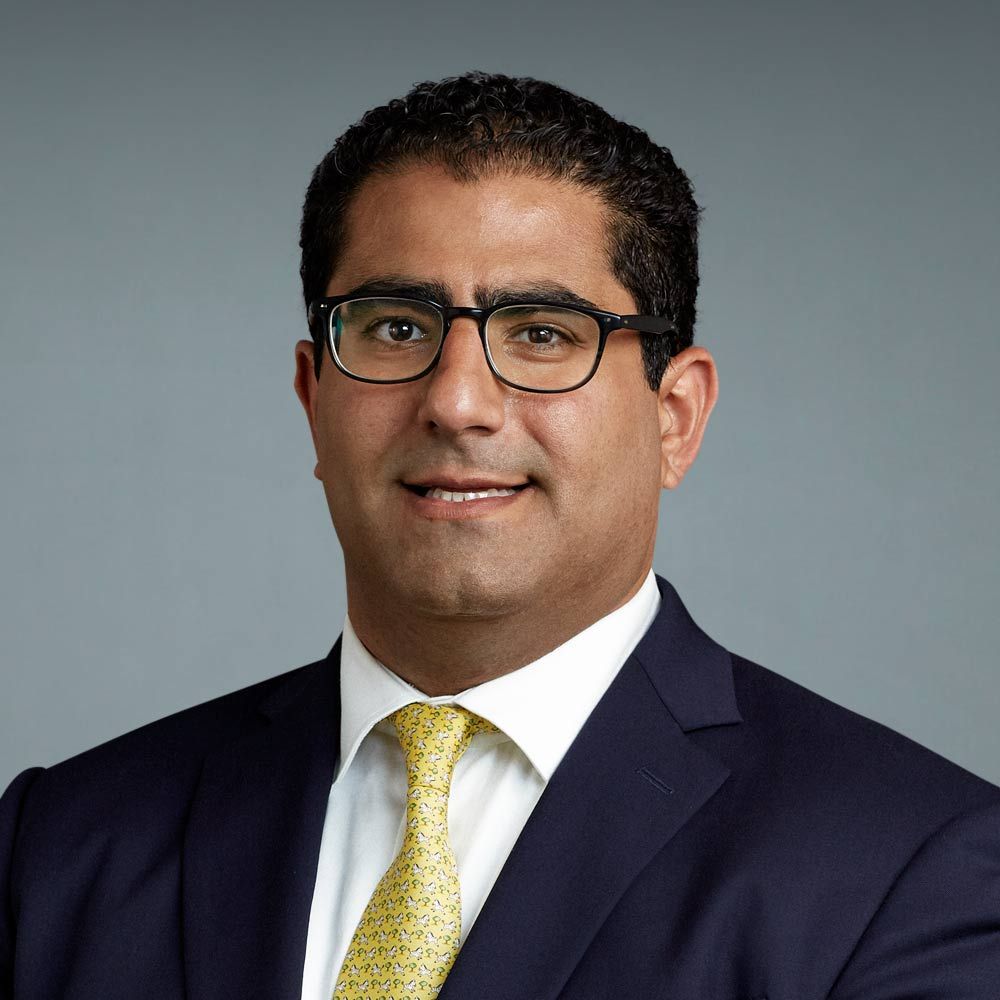Publication
Article
CURE
Debt Crisis: Coping with Cancer's Financial Aftermath
Author(s):
Coping with cancer’s financial aftermath calls for creative solutions.
In 2010, while leading a focus group in Knoxville, Tenn., Joanne Buzaglo looked around the room and saw a group of people who appeared highly educated, well-dressed and comfortably middle class. She had been helping people with cancer cope with the social fallout of the disease for 20 years. By that time, she thought she’d seen and heard it all. But Buzaglo found herself speechless as, one by one, the people around the table described their struggles with one of cancer’s most toxic side effects: medical debt so crushing that it cost patients everything.
“It was the most poignant moment I’ve ever felt,” says Buzaglo, vice president of research and training for the Cancer Support Community. “People felt shame and worry, and they were often too overwhelmed to take action.” Buzaglo and her team convened similar groups across the country to update Frankly Speaking About Cancer: Coping with the Cost of Care, a program aimed at helping people manage the cost of cancer treatment.
Health care is generally expensive, but cancer care tends to rack up the largest of medical bills—at precisely a time when people are least able to cope. Medical insurance cannot cover all the costs. Debt piles up quickly, and soon patients can find themselves fighting not only for their physical lives but for their fiscal lives, as well. To make matters worse, patients often have little or no control over the cost of services. Even when they are vigilant about choosing network providers, they soon learn that hospitals contract with providers who may be out of their network, triggering penalties on top of hefty expenses. And newly released data from the Centers for Medicare and Medicaid Services show that hospitals— even facilities in close vicinity—charge vastly different prices for the most common medical procedures. With so much out of a patient’s control, it’s more important than ever to craft a plan for managing debt from the cost of cancer care.
Early in their cancer experience, patients should develop an action plan for managing medical debt— one that includes evaluating their insurance and asking their healthcare providers if they provide financial assistance, discounts and extended payment plans, says Mark Rukavina, of Community Health Advisors. He urges patients to contact a social worker to get started identifying places that offer assistance, and then meet with a patient accounts representative and ask for help in assessing finances and applying for aid.
The worst thing anyone can do is to ignore a bill, Rukavina says, because it may be sent to a collection agency, triggering another set of complications, such as ruined credit. Reaching out to government leaders can sometimes help in identifying local, state or community services. “If people don’t ask for help, they’re not likely to get it,” Rukavina says.
Bob Kail and his wife, Patte, sought financial help following his diagnosis of late-stage colon peritoneal carcinomatosis in 2012. Four tumors in different areas brought extensive surgery, including the removal of his colon, and affected nearly every aspect of their lives, in addition to the lives of Patte Kail’s two children from a previous marriage. Because Kail had to use an ileostomy and couldn’t lift heavy objects, he could no longer work as a truck mechanic. The health insurance he received through his employer carried a $5,500 deductible, which Kail quickly met. But when his employer could no longer pay for Kail’s insurance, Kail had to obtain coverage via the Health Insurance Portability and Accountability Act, with premiums of nearly $700 a month.
People also need to scrutinize insurance statements for accuracy, and relentlessly pursue billing errors, says Karen Pollitz, a senior fellow at the Kaiser Family Foundation. In fact, the Commonwealth Fund’s 2012 Biennial Health Insurance Survey reported that in 2012, 4 percent of adults ages 19 to 64—an estimated 7 million people—were contacted by a collection agency because of an error on a medical bill.
Patients should ask a friend or family member for help in deciphering any charge that seems suspicious and figuring out what service may have been paid or denied incorrectly. Pollitz, who is also a survivor of cancer, recalls receiving insurance statements that were “cryptic and infuriatingly vague.” Many phone calls to the insurance company’s billing specialist, and many hours of persistence, may be necessary to track down exactly what services were rendered, especially when the insurance claim indicates something as indistinguishable as “medical services” or “laboratory services.” To obtain the proper information, patients may have to ask the insurer for every detail of a particular claim, the actual billing codes and the exact description of each service, as well as who ordered the service. Insurance companies are required by law to provide that information, Pollitz says.
Patients should follow up immediately with insurance companies, using the formal process of appealing a billing mistake or a treatment that’s been unfairly denied, and include all supporting documentation. “Don’t take the word of the customer service representative at the other end of an 800 number,” Rukavina says. “Pursue it formally and get a formal response. Copy the state attorney general or the state office of protection.”
“When you’re on Social Security, that’s 70 percent of your income,” Patte Kail says. “We worry. Bob especially worries, and he doesn’t need the extra stress. With Bob, I try not to discuss finances until I have to. We have a house with two and a half years left on a mortgage. I have a pre-teen and a teenager, and I still have to be able to give to them; this affects everyone.”
The Kails turned to their state representative for help but found none, so now they are seeking help from their U.S. representative in Washington, D.C. While awaiting Medicare eligibility, which typically takes two years, Kail applied for public assistance through the state of Pennsylvania, but his Social Security disability payments may mean that his income is too high. Many of Kail's out-of-pocket expenses aren’t covered, including 25 percent of the wound care supplies for his ileostomy and unhealed surgical incisions, as well as some of his home health care and a 50 percent share of ambulance bills.
The Kails are still paying a modest monthly amount toward four hospital bills and home health care from 2012, which they negotiated with the institutions. “They send you a bill for $1,500. You look at them and say, ‘Yeah, really,’” Patte Kail says. But help is available for those who qualify, she adds. She suggests seeking out a social worker for assistance with applications. A $10,000 grant from the CancerCare Co-Payment Assistance Foundation pays for Kail’s chemotherapy drugs but not for his steroids and antinausea medication.
After Martha Jacobs of Chicago received diagnoses of breast and colon cancer between 2010 and 2012, she continued working through her chemotherapy and radiation treatments. But she lost her job—and her health insurance—in 2012, and had to obtain COBRA coverage. Jacobs had to deal with three different hospitals, calling each to set up an affordable payment plan.
“Each has been very helpful in taking what I can afford at the time of payment,” she says. “At a very stressful time, this has helped me in so many ways and has given me peace of mind and the ability to focus on what lies ahead.”
While a bill is in dispute, patients should call their doctor or hospital and inform the billing department of the dispute, explaining that they’re trying to sort it out and asking them to place the bill on hold. “Otherwise, the second they put the bill in the mail, a clock starts ticking, and often after 60 to 90 days, if the bill is not paid, it may be moved to delinquent status and sent to collection,” Rukavina says.
Another option: Patients can contact faith-based or other nonprofit organizations to ask if emergency funds might be available. Also, the federal government lists assistance programs at HealthCare.gov. Use the search terms “consumer assistance” to locate programs in individual states.
Additional potential funding sources for resolving medical debt include:
> Pharmacy assistance programs
> Retirement funds
> Life insurance loans
> Accelerated death benefits
> Viatical settlements (selling a life insurance policy to a third party)
> Reverse mortgages
Some cancer patients choose to modify their mortgage by asking the lending institution to temporarily lower the interest rate and, thus, the monthly payments. Such a modification can still be added to a credit report and can negatively impact a credit rating, says Rodney Anderson, a mortgage lender in Dallas and author of Credit 911. Plus, the fees and interest don’t go away but get added to the back of the loan.
With some clients, Anderson sees confusing medical bills going to collection agencies because patients believe they are not bills or that third party payers are handling them in total. “If you find an unpaid bill from a collection agency, call the agency and ask for a validation letter for the debt,” Anderson says. “But also ask the provider to remove the item from your credit report before you pay the bill, although by law they don’t have to.” Anderson is supporting two pieces of legislation under consideration in Congress: one would remove medical debt in collection from credit reports after the debt is fully paid or settled; the other would give a consumer 120 days to settle or dispute a medical debt with a debt collector before any adverse report is sent to a credit reporting agency.
Sometimes, regardless of how hard people try to resolve medical debts, bankruptcy remains the best option, or, as Anderson puts it, “losing the battle to win the war.” The authors of a recent study published in Health Affairs analyzed a database of people who had received a cancer diagnosis in Washington state from 1995 to 2009 and found that they were “2.65 times more likely to go bankrupt than people without cancer.”
Bankruptcy may ruin your financial life, Anderson says, but bankruptcy isn’t the only thing that can ruin credit for years. Bankruptcy stays on credit reports for 10 years, but it can take seven years for a bad credit rating to be cleared, especially when the bills go to collection. Anderson cautions that credit agencies can sell unpaid debts to another collection agency, and then the seven years of bad credit starts over again. Personal bankruptcy avoids this action and can protect long-term assets, such as home equity and retirement funds.
People with cancer are sometimes reluctant to ask for help because they may not want to expose financial reserves, such as college and retirement funds. Rukavina tells them to face their biggest fears and ask themselves what they’re afraid of, and what they are afraid of losing.
“Weigh the money first, and understand where you are financially,” he says. “You have to be able to have an honest conversation. Sharing that information may be uncomfortable but necessary. Even ambulance companies will give people breaks.”
Editor’s Note: Bob Kail died on Nov. 26. CURE is proud to honor his memory.






